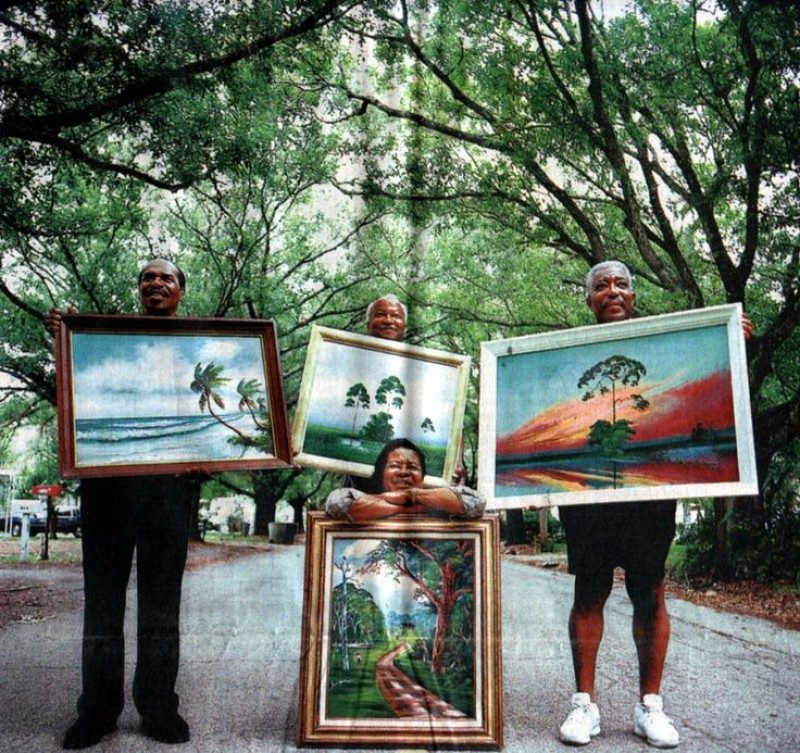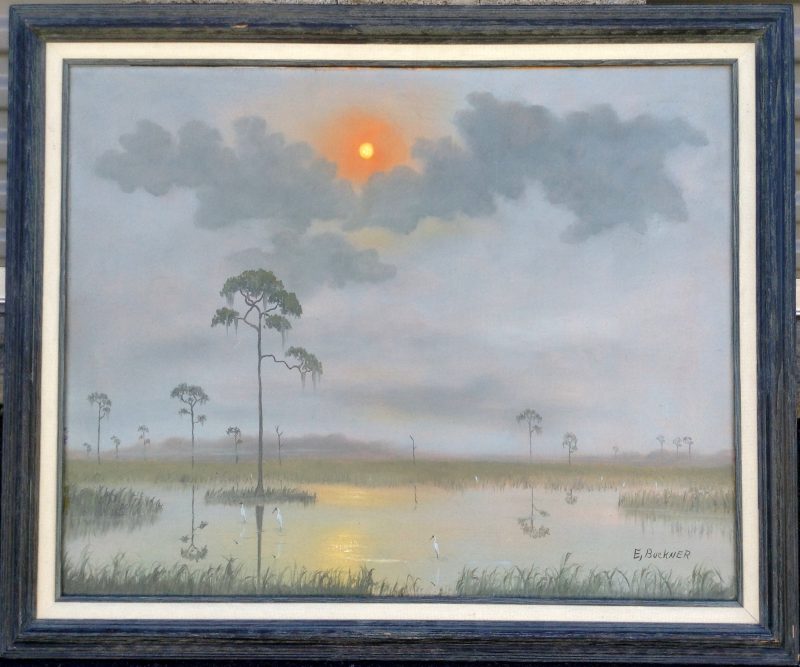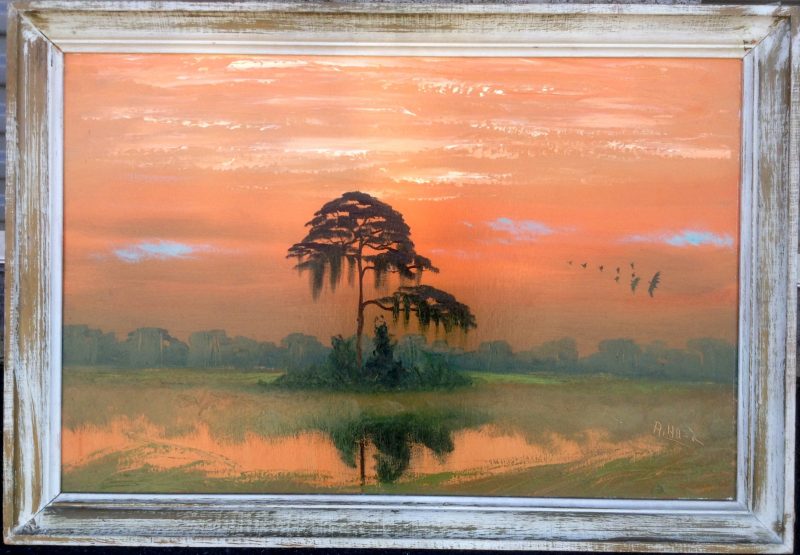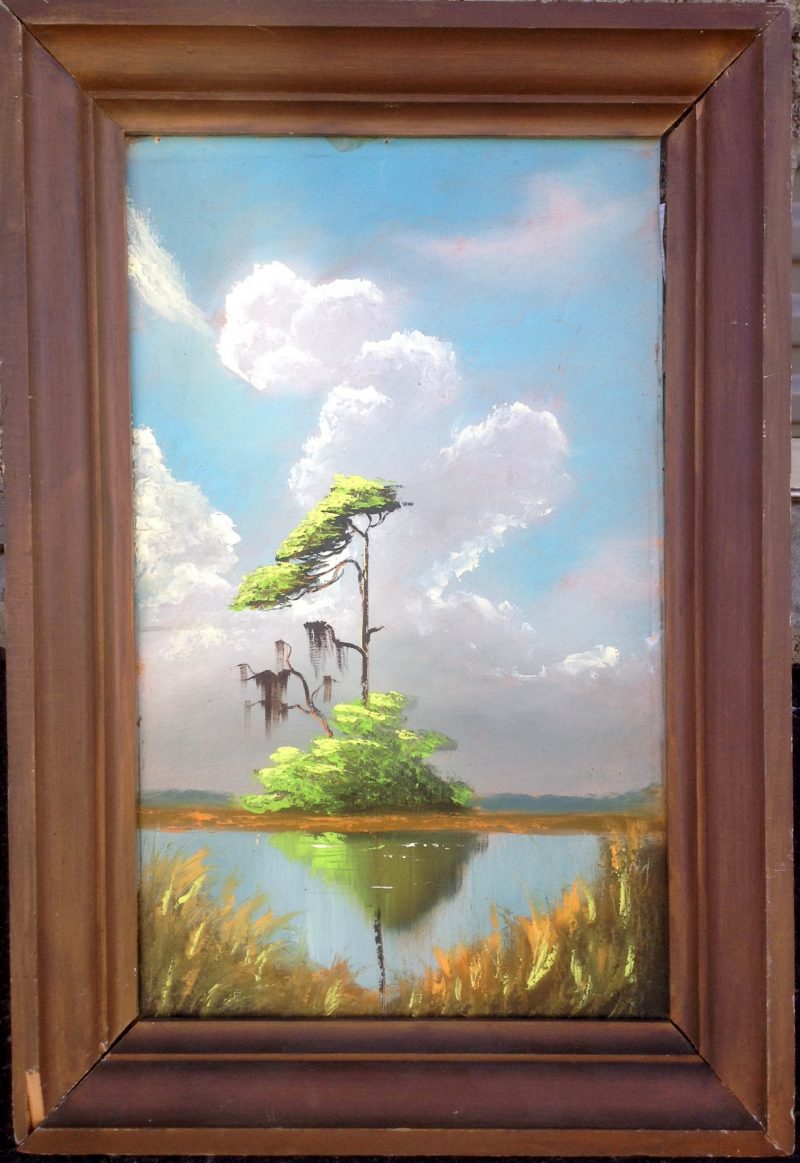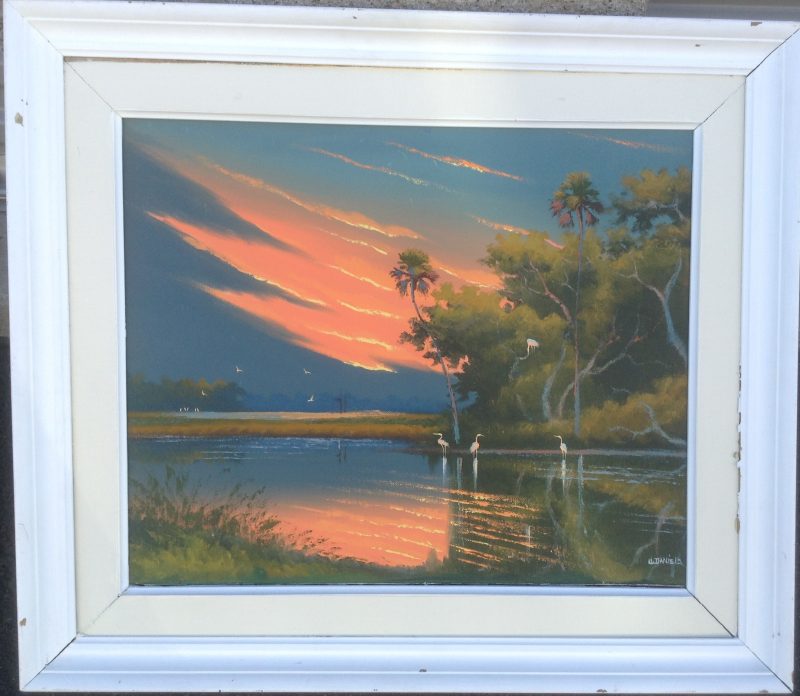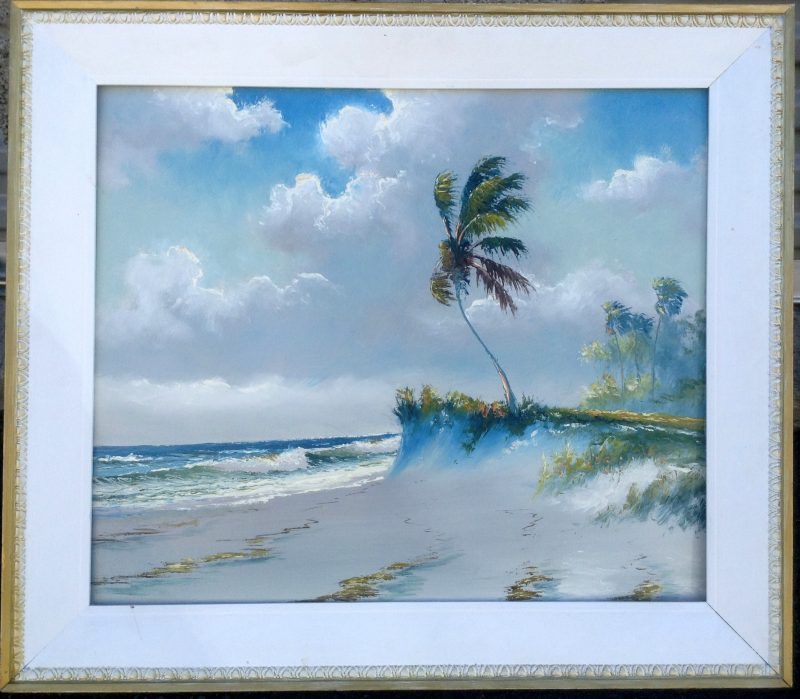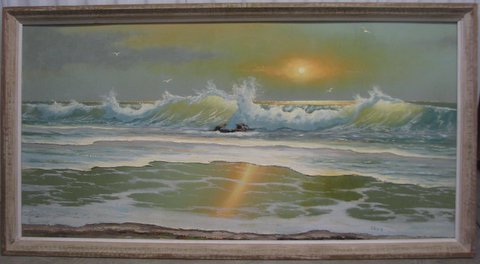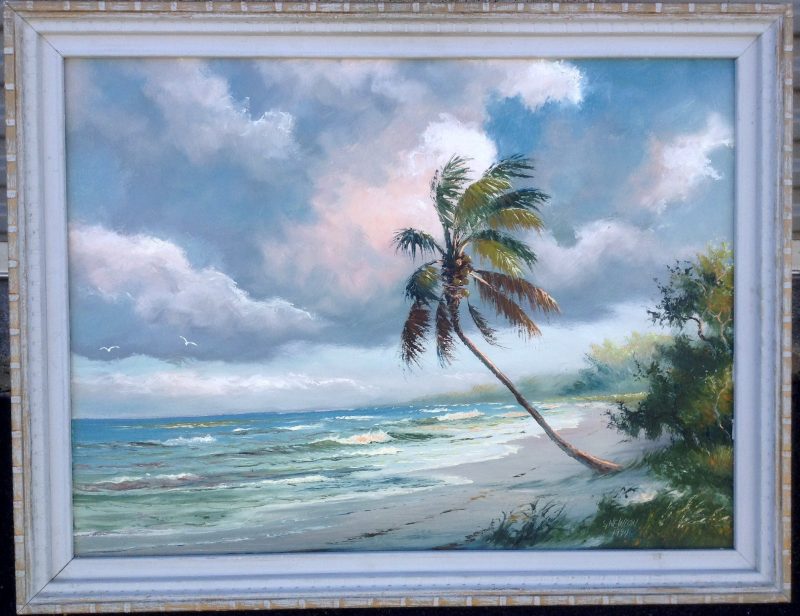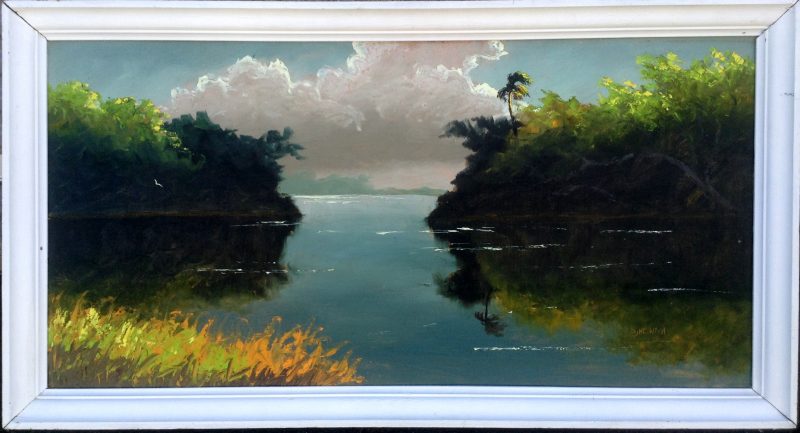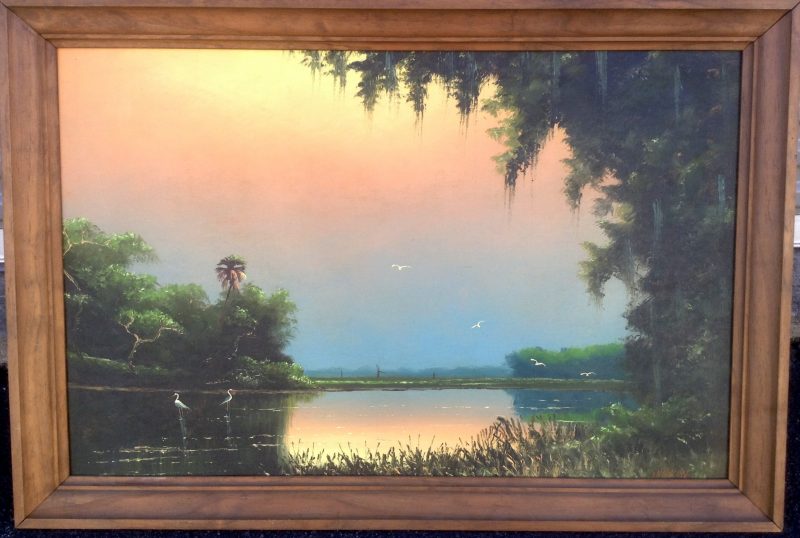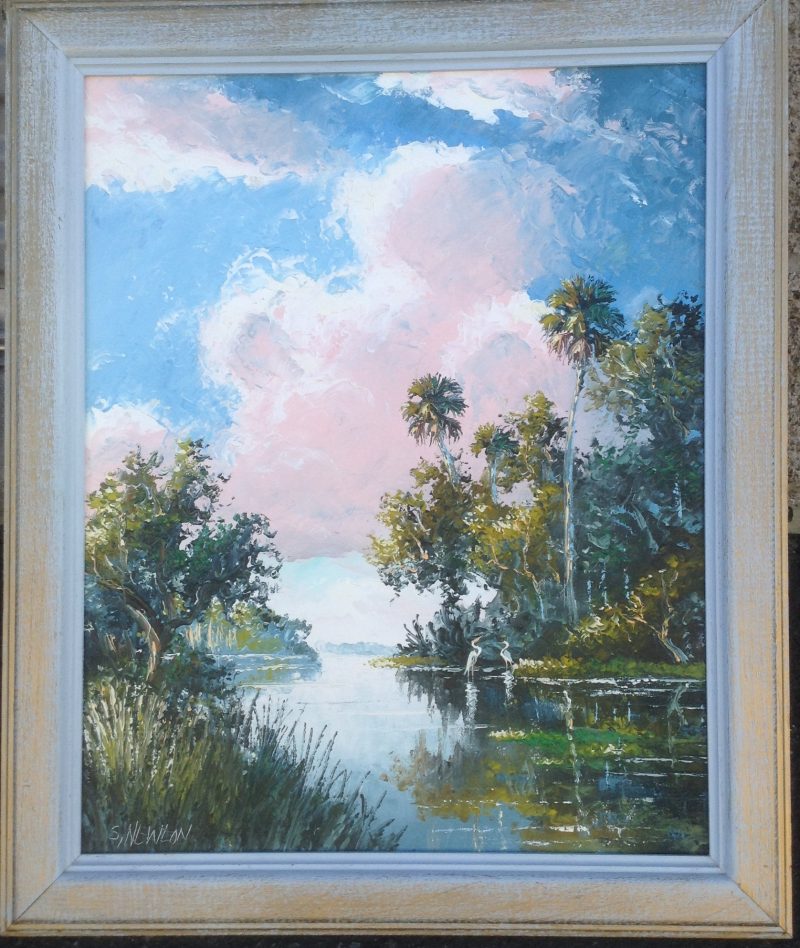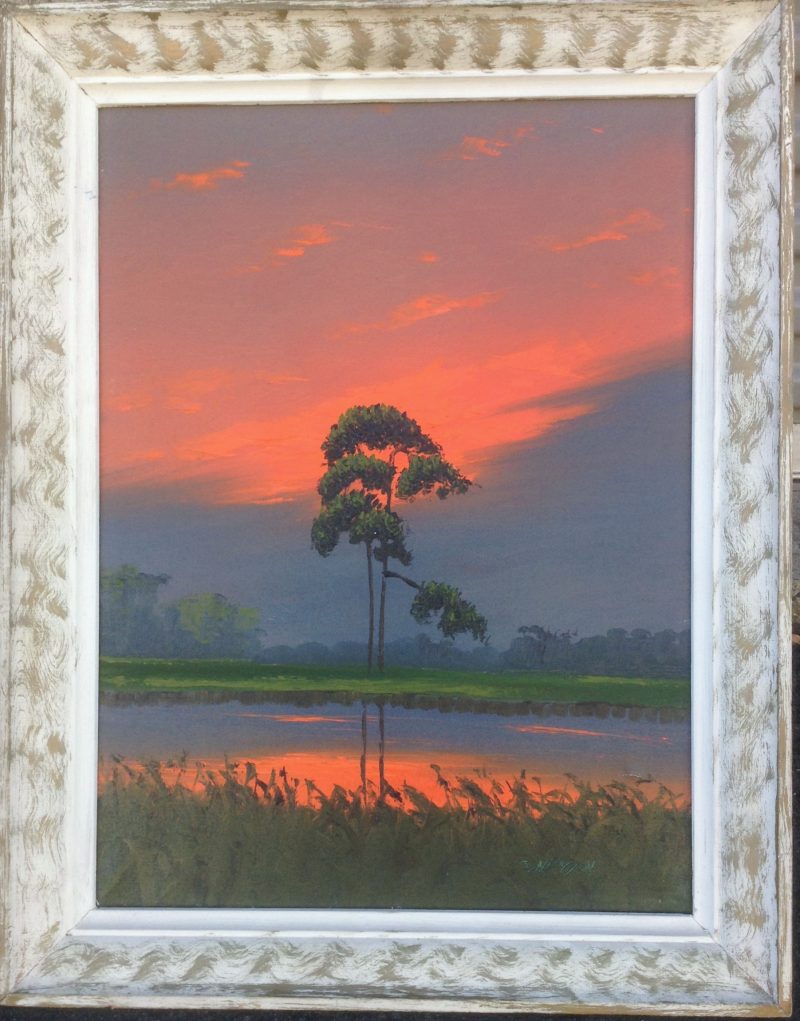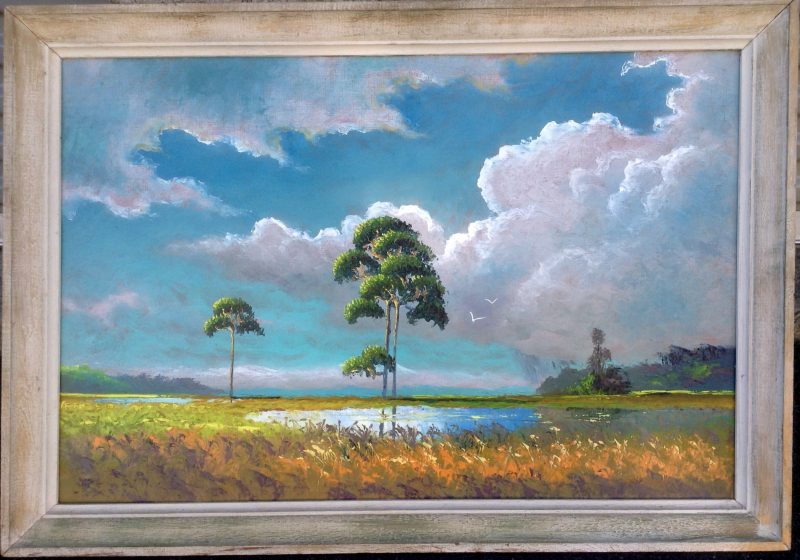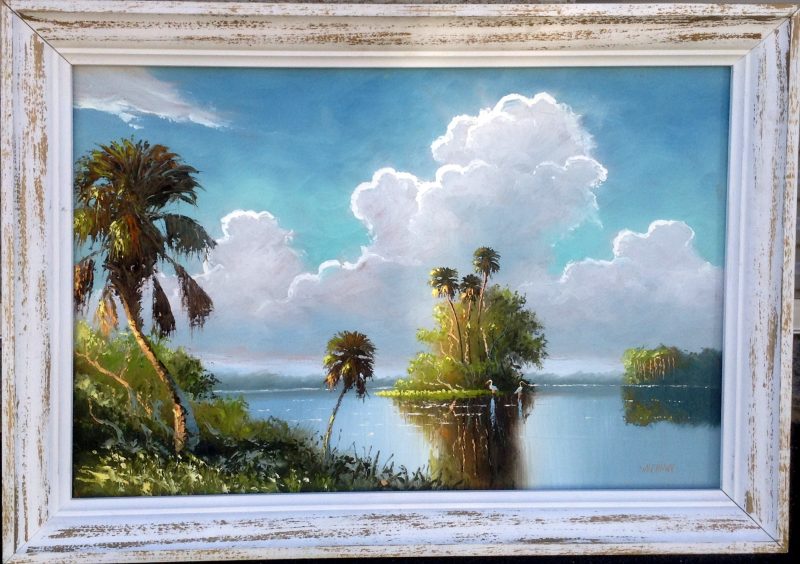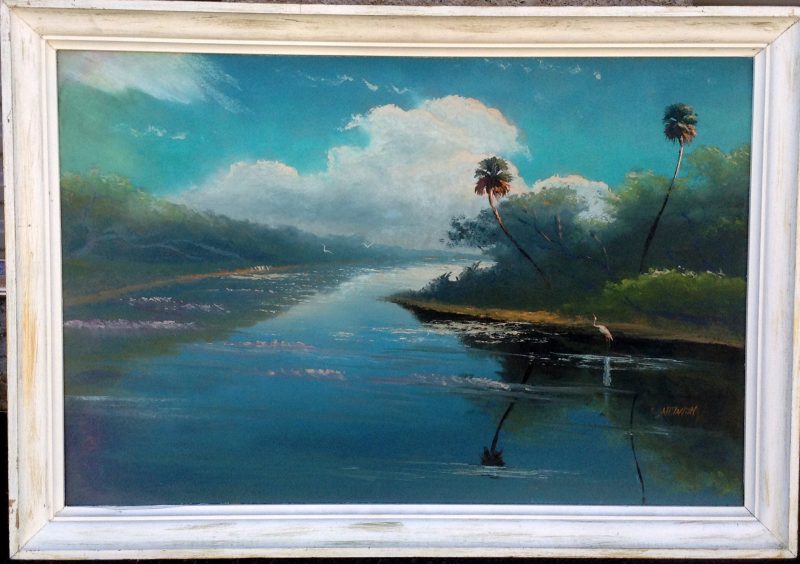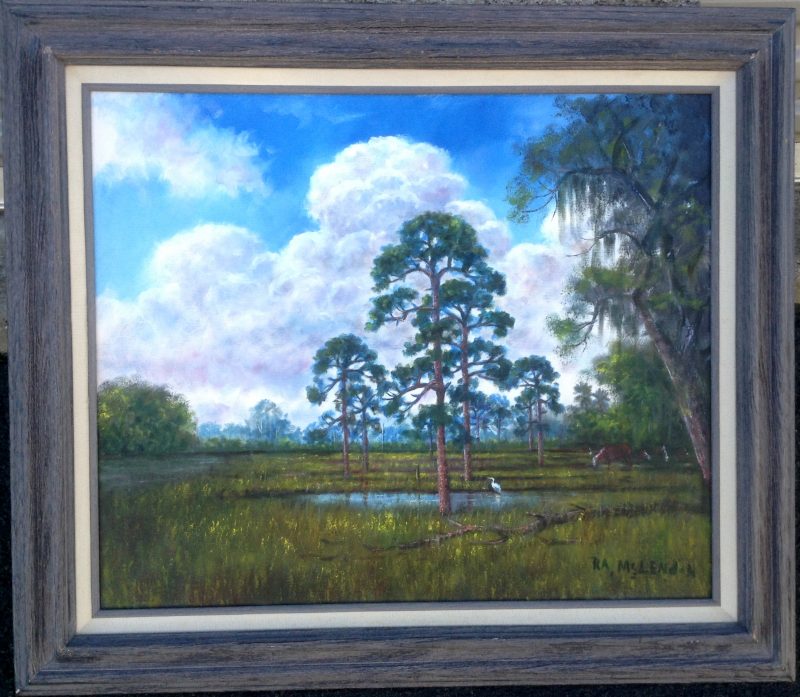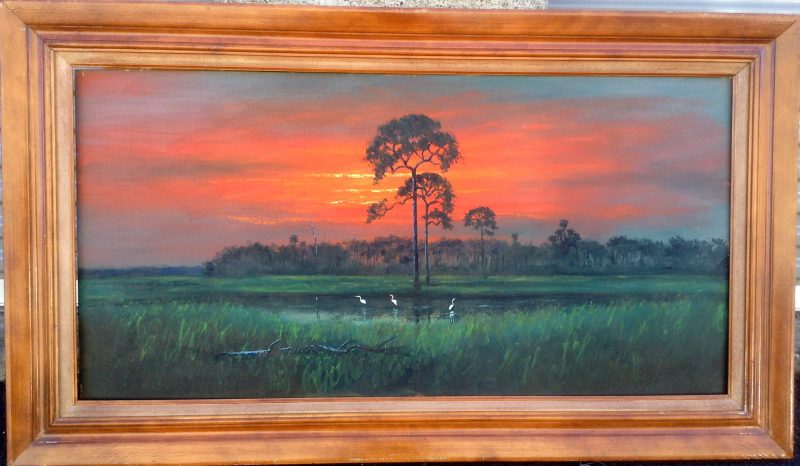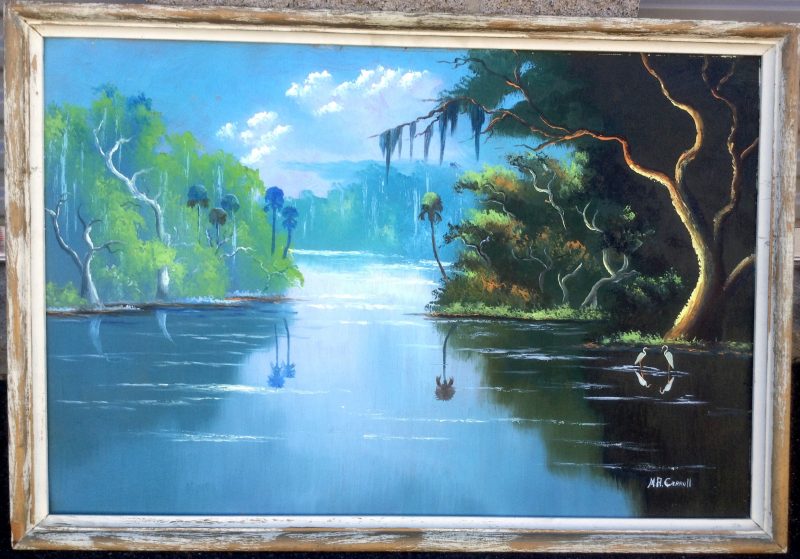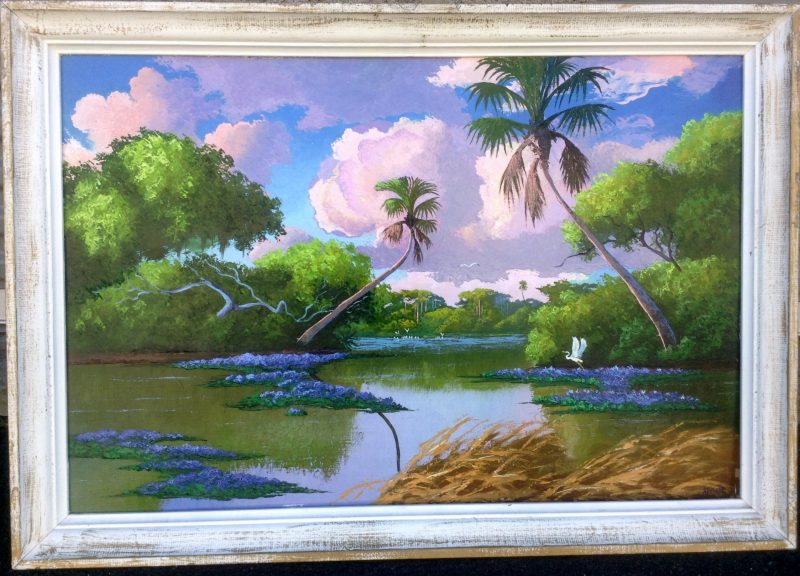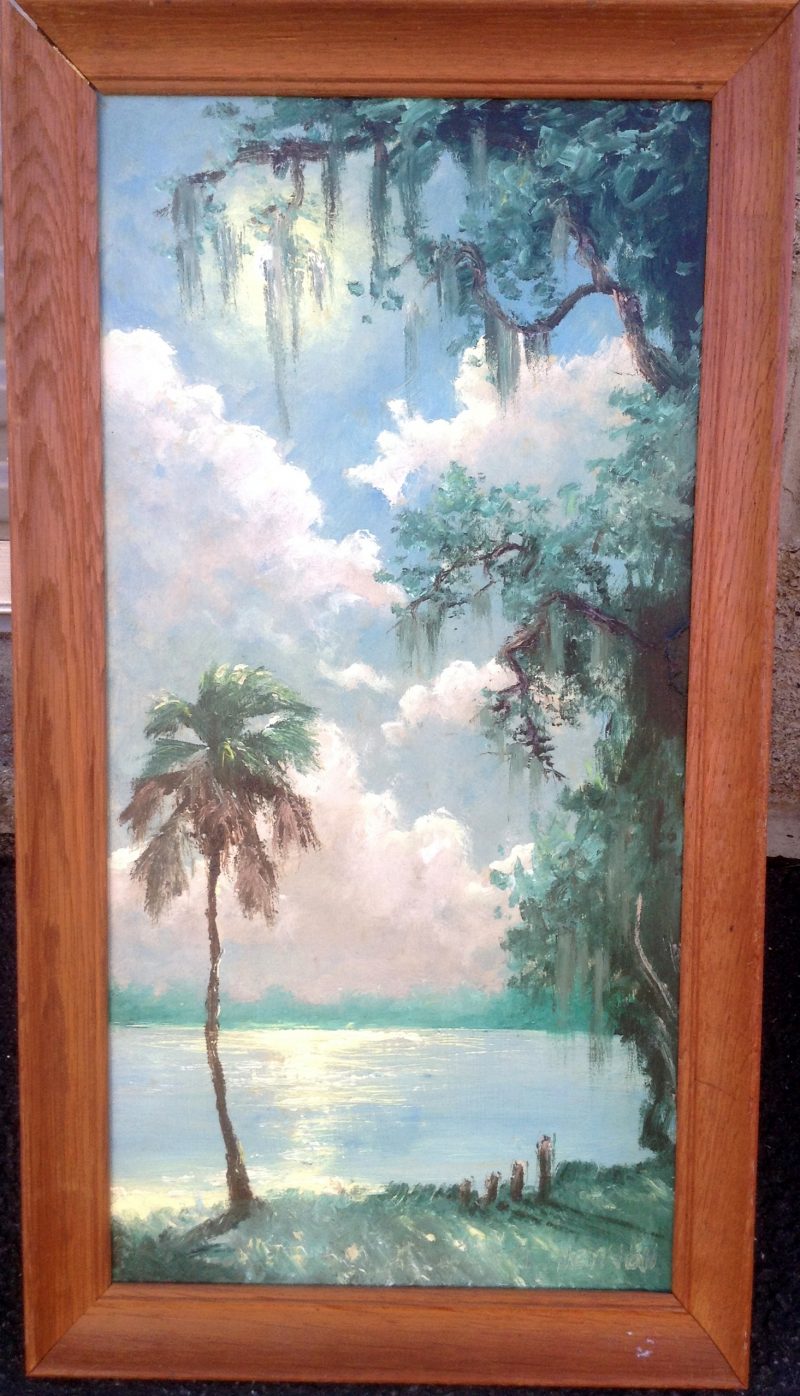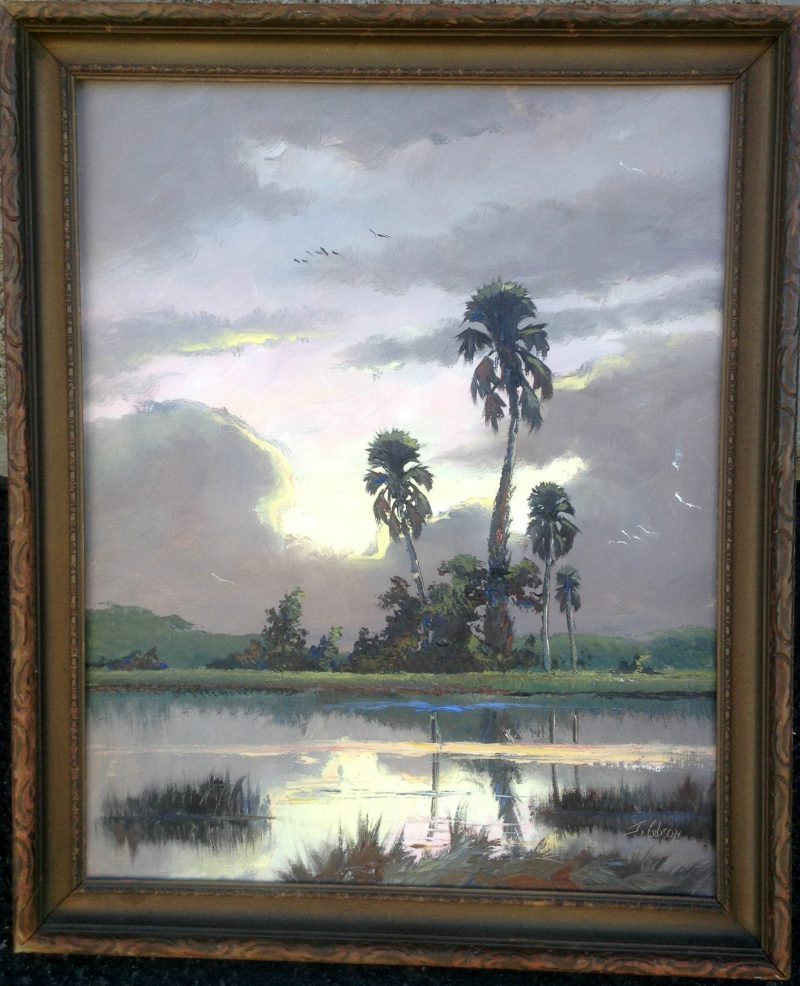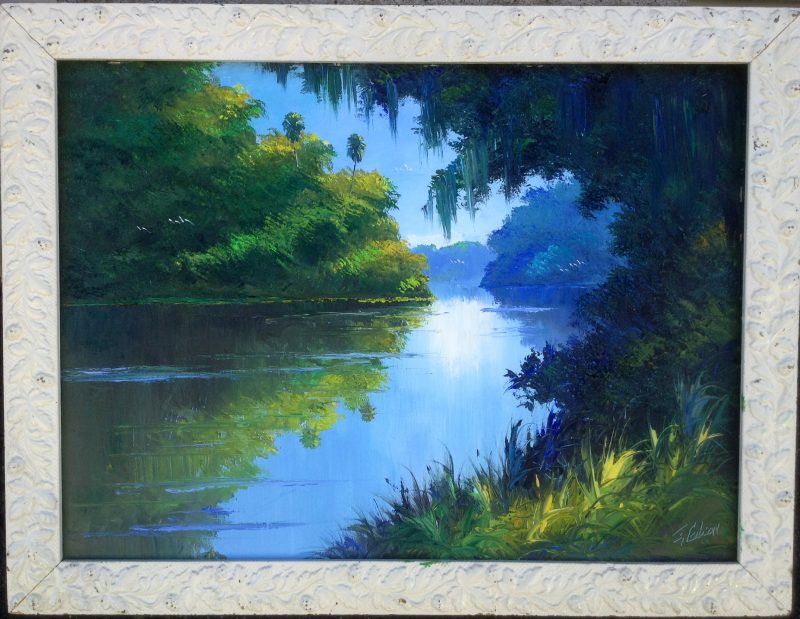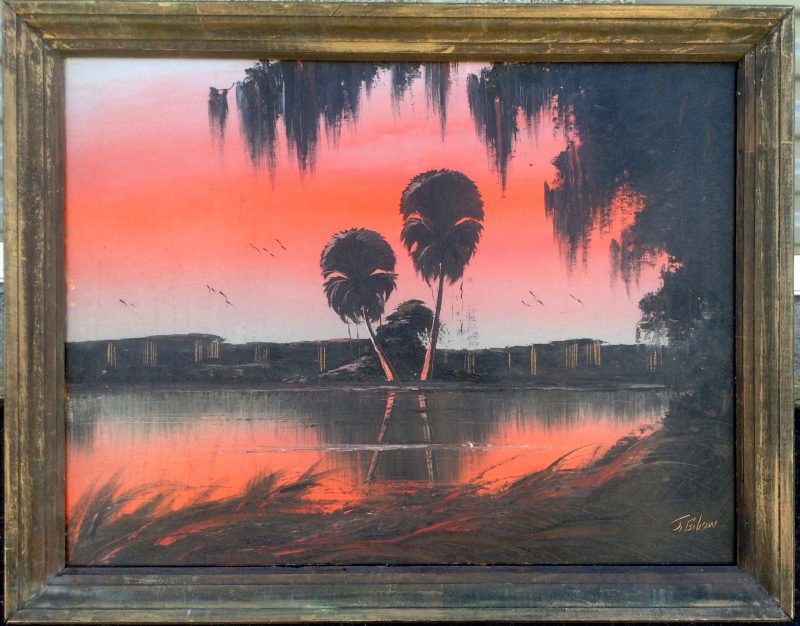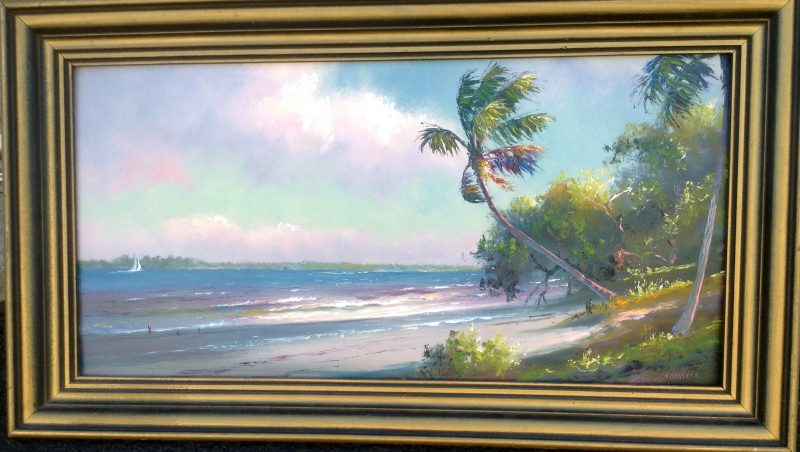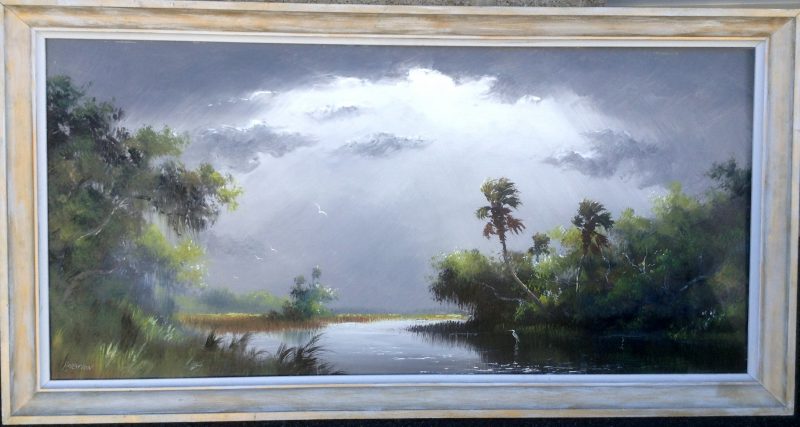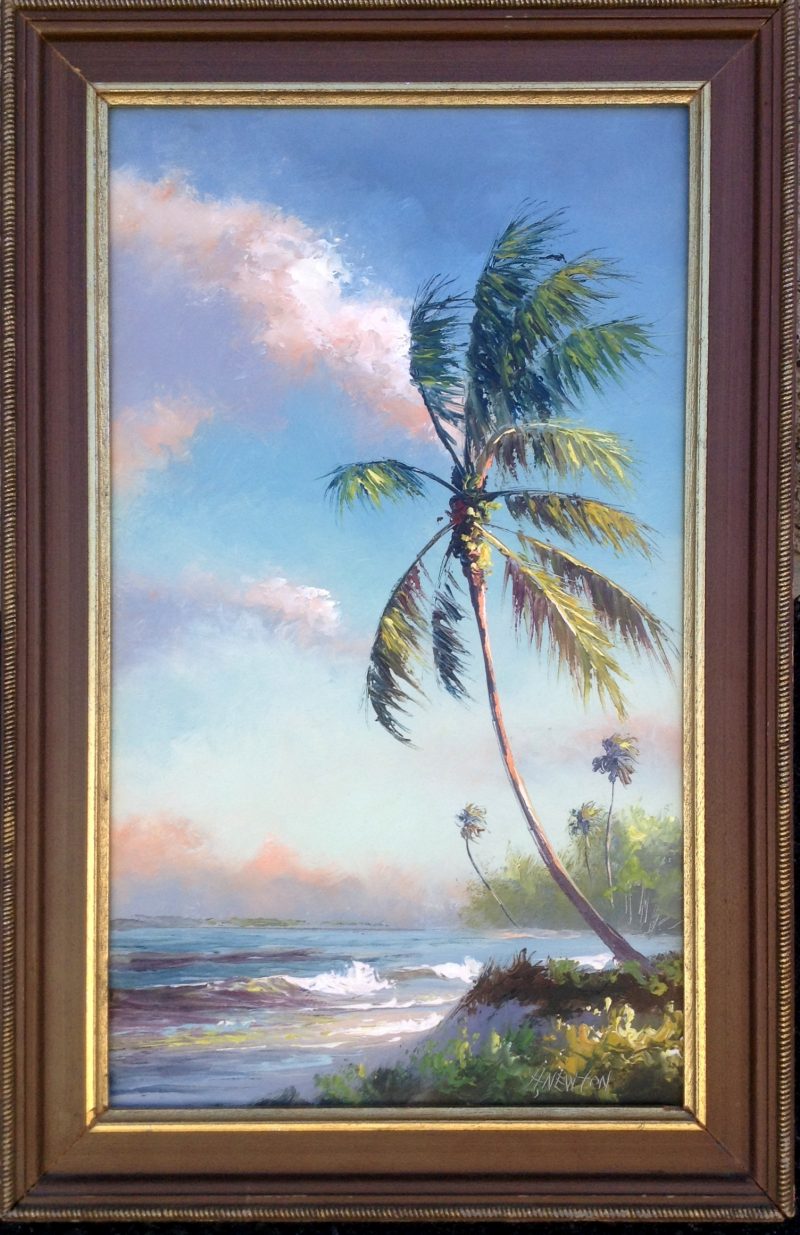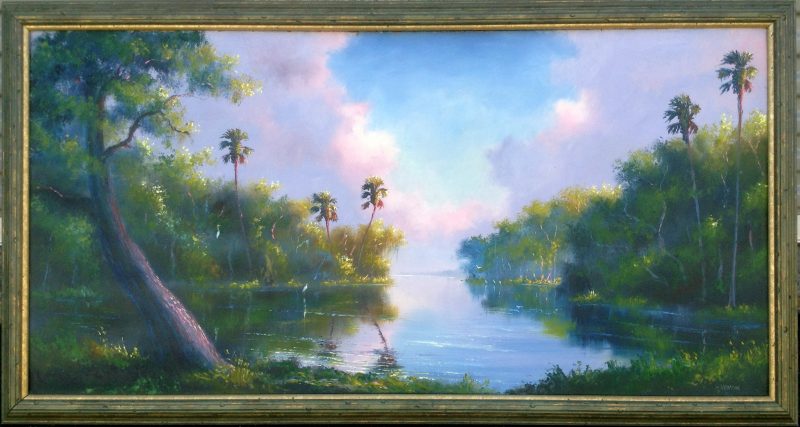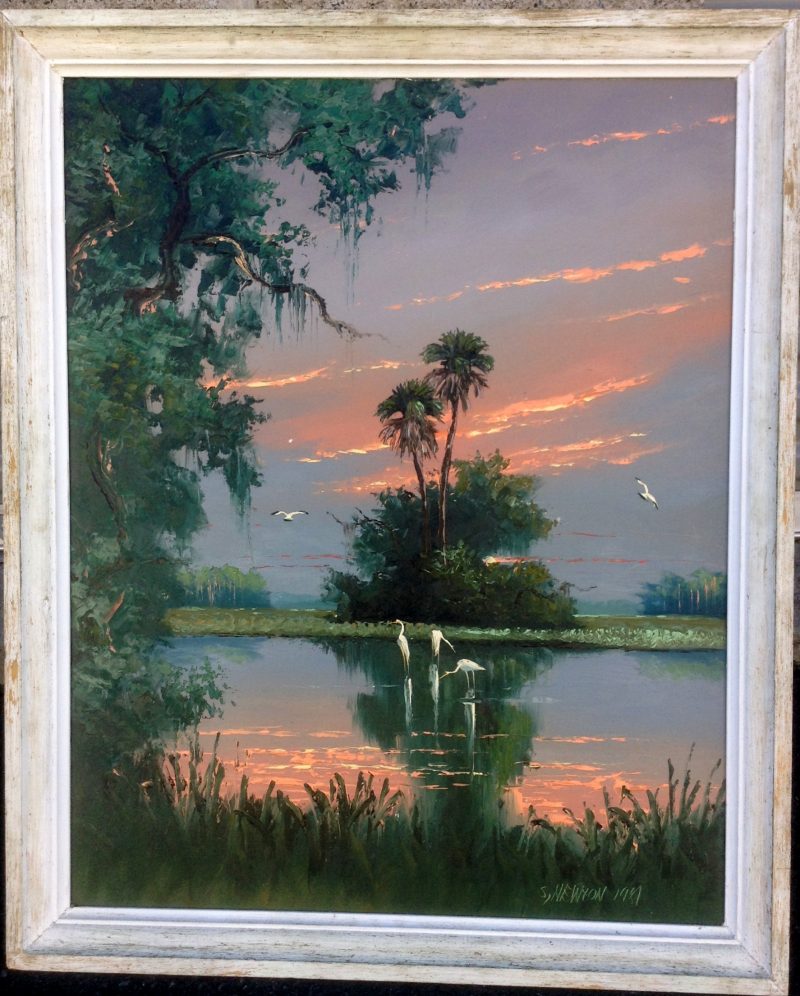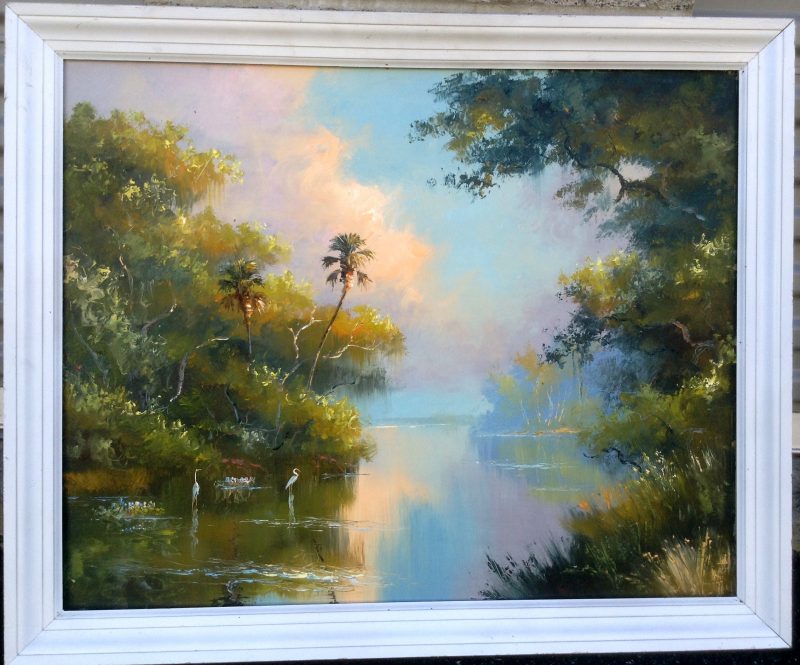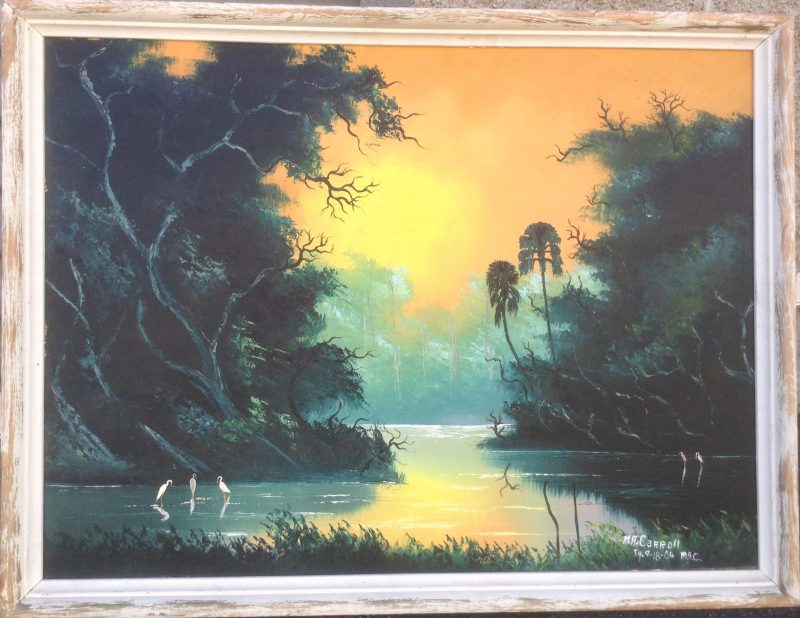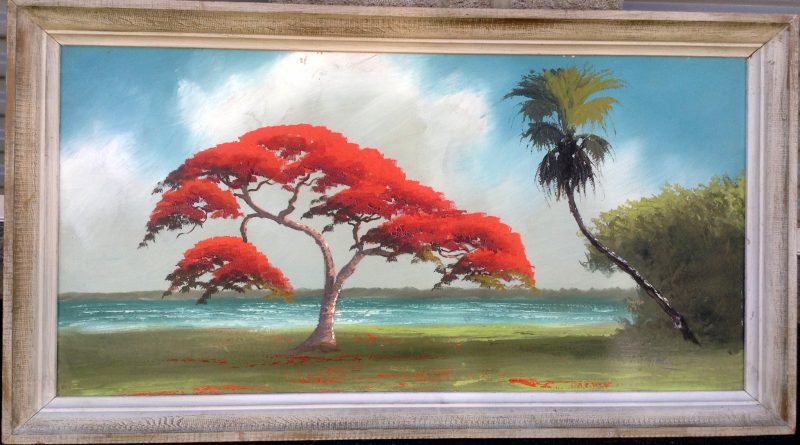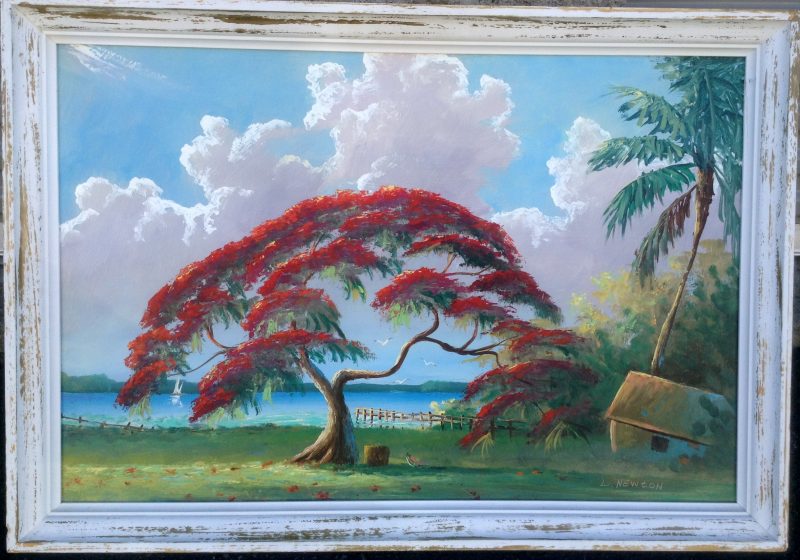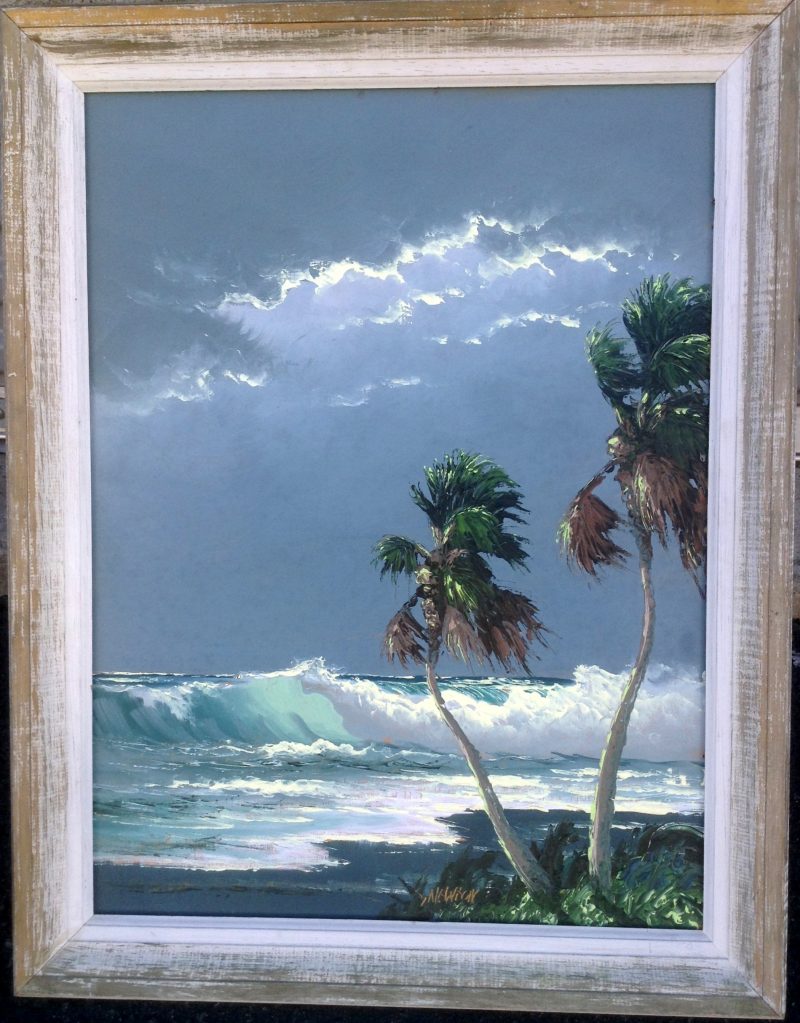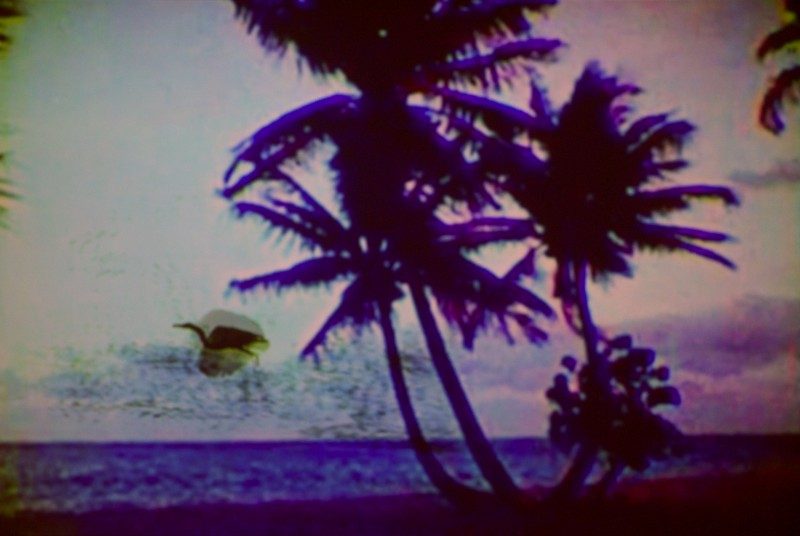Florida Highwaymen Collection
Here is a selection of artworks currently not exhibited, and available for future travelling, international exhibitions & projects.
For more information, contact Guy Berube / director LPM Projects / Ottawa, Canada / guy@guyberube.com
See sample exhibit, curated by Guy Berube, with the assistance of the Embassy of the United States, Ottawa, Canada.
Special thanks to Tony Hayton for generously lending works from his collection for this exhibition and for his longtime dedication to preserving the Florida Highwaymen’s legacy
“Beauty is in the eye of the beholder. I guess there’s a lot of beholders”. – Mary Ann Carroll, Florida Highwaymen Artist.
The Highwaymen, also referred to as the Florida Highwaymen, are a group of 26 African American landscape artists in Florida. Self-taught and self-mentoring, they created a body of work of over 200,000 paintings, despite facing many racial and cultural barriers. Mostly from the Fort Pierce area, they painted landscapes and made a living selling them door-to-door to businesses and individuals throughout Florida from the mid-1950s through the 1980s. They also peddled their work from the trunks of their cars along the eastern coastal roads (A1A and US 1).
For over 50 years The Highwaymen created large numbers of relatively inexpensive landscape paintings using construction materials rather than traditional art supplies. As no galleries would accept their work, they sold them in towns and cities and along roadsides throughout Florida, often still wet, out of the trunks of their cars. Their success and longevity is remarkable considering they began their career in the racially unsettled and violent times of the 50s in Florida and amid the social conditions of the Jim Crow South where the stirrings of the civil rights movement were only just beginning. They have been called “The Last Great American Art Movement of the 20th century”.
History
In the 50s and 60s, it was impossible to find galleries interested in selling artworks by a group of unknown, self-taught African Americans. Instead they sold their art directly to the public rather than through galleries and art agents. Rediscovered in the mid-1990s, today they are recognized as an important part of American folk history.
In 1970 one of the original members of the group, Alfred Hair, who was also considered to be the main catalyst and soul of the group, was killed. Subsequently some of the group’s creative energy and direction were lost, the remaining members created fewer paintings, and productivity waned. However they were re-discovered in the mid-1990s by Jim Fitch, a Florida art historian, and Jeff Klinkenberg of the St. Petersburg Times wrote several newspaper articles about the Florida Highwaymen in August 1995. Since then they have become celebrated for their idyllic landscapes of natural settings in Florida. The 26 Florida Highwaymen were inducted into the Florida Artists Hall of Fame in 2004.
Their renown has grown internationally during the 2000s and they have become a recognized part of Florida culture and history. The remaining artists in the original group (8 deceased) continue to paint to this day, more than 50 years since they first started to paint, even though most artists are now in their 70s and some nearing their 80s. Over time their style has evolved into more carefully created works and away from the original “fast painting” techniques that enabled them to produce large quantities of paintings in their early years.
Analogies compare the Hudson River School of the mid 19th Century and Group of Seven (artists) from Canada in the early 20th century to The Florida Highwaymen Artists. In their respective times these groups mentored and created works collaboratively. Painting en plein air style, these groups of artists created expansive landscapes, of untouched and pristine lands, creating scenes of timelessness and raw natural beauty. In many ways the Florida Highwaymen’s story is even more compelling and romantic than the other groups, as The Highwaymen had no backing or support and were much more resourceful and creative in both production and sales of their works.
The Florida Highwaymen were influenced by Florida landscape artist A.E. Backus during the 1950s-80s (although only Alfred Hair was a formal student of Backus). His influence extended through Hair and Harold Newton to the other twenty-four artists in the group. Some in the formal art world have given this group and its followers the name “Indian River School,” but they are most well known as The Highwaymen. Not known as “highwaymen” in their heyday, the name was bestowed by Florida art collector and museum curator, Jim Fitch, in a 1995 article in Antiques and Art Around Florida.[9]
Style
The Highwaymen were mostly self-taught painters, who mentored each other. Excluded from the traditional world of art shows and galleries, the Highwaymen painted on inexpensive Upson board or masonite and framed their paintings with crown moulding (brushed with gold or silver paint to “antique” them). They packed these paintings into the trunks of their cars and sold them door-to-door throughout the south-eastern coast of Florida. Sometimes the paintings were stacked before the oil paint was dry.
Paintings by the Florida Highwaymen are prized by collectors today, but their story is about much more than art.
Today their 200,000 plus paintings have gathered significant interest and have become quite collectible. At auctions some of these particular painters’ works have been recognized with high prices, notably important older works by the “original” members.
Membership
It was not a formal movement and represented no “official” group, yet The Highwaymen thrived as artists and entrepreneurs through their sheer determination to succeed as painters and not as labourers in citrus groves, their expected social role. The works are also classified as “Outsider Art“, or “Folk Art”. They honed techniques to rapidly produce their paintings and developed strategies to sell and market their artwork outside of the formal world of art galleries and exhibitions. Their story is one of African Americans who carved out unique economic opportunities despite the social conditions of the Jim Crow south.
In 2000, twenty-six artists were identified as Highwaymen. These artists were inducted into the Florida Artists Hall of Fame in 2004 as the Highwaymen and include: Curtis Arnett, Hezekiah Baker, Al “Blood” Black, brothers Ellis and George Buckner, Robert Butler, Mary Ann Carroll (the only woman in the group), brothers Johnny and Willie Daniels, Rodney Demps, James Gibson, Alfred Hair, Isaac Knight, Robert Lewis, John Maynor, Roy McLendon, Alfonso “Pancho” Moran, brothers Sam, Lemuel and Harold Newton, Willie Reagan, Livingston “Castro” Roberts, Cornell “Pete” Smith, Charles Walker, Sylvester Wells, and Charles “Chico” Wheeler.
Of these twenty-six, nine are considered “original” (or the earliest) Highwaymen: Harold Newton, Alfred Hair, Roy McLendon, James Gibson, Livingston Roberts, Mary Ann Carroll, Sam Newton, Willie Daniels, and Al Black.
In 2008, a hour-long PBS-TV documentary film was released called “The Highwaymen: Legend’s of the Road”. It was produced by father and son team Jack and John Hambrick (both veteran TV news journalists).
As of May 25, 2009, eight are deceased, both Buckners, Hair, Harold Newton, A.Moran, L.Roberts, H. Baker and most recently, Johnnie Daniels. Most of the living artists are active and aggressively marketing their newer works. Most of the paintings are signed, but there are a number of paintings that weren’t, there are a number of paintings that are sold as “Highwaymen Style” that emulate the iconic landscapes of the Highwaymen artists, but are indeed just mere reproductions with little real value. Older paintings from the 1950s and early 60s era are more sought after by collectors.
Exhibits
An ongoing exhibit in Washington, D.C. features vintage paintings by the core artists of the group. Included in the exhibit are paintings by Alfred Hair, Harold Newton, Roy McLendon Sr., Mary Ann Carroll, James Gibson, Livingston Roberts, Willie Daniels, Ellis Buckner, George Buckner, Sam Newton and Al Black. Entitled “The Florida Highwaymen: A Disappearing Landscape,” the exhibit highlights not only the works and the unique historical and cultural significance of the Florida Highwaymen, but also their important depiction of the natural beauty of the endangered wetlands environment.
The Florida Aquarium in Tampa, Florida features vintage paintings by Alfred Hair, Sam Newton, James Gibson and Harold Newton. Emphasizing the “timeless” nature of the Florida Highwaymen works and the environmental and wetlands conservation message they also represent.
The Museum of Florida History in Tallahassee has paintings by twenty-three of the original twenty-six artists. In Orlando, Florida at the Orange County Regional History Centre, a 2010-11 exhibit, “Against All Odds: The Art of the Highwaymen”, paintings by all 26 artists together in one exhibit for the first time.
MORE:
by Jim Fitch
As seen in Antiques & Art Around Florida, Winter/Spring 1995
“The Highwaymen” is a name I’ve given to a group of black artists working on the East coast of Florida from approximately 1955 to the present. So called because their marketing and sales strategy consisted of traveling the highways and byways of central Florida peddling their paintings out of the back of their cars.
Although I’ve identified nearly twenty of these artists still living, they are, for the most part, unknown and have not received credit for their contribution to Florida’s art tradition. In fact, it was these artists who were the bare bones beginning for Florida’s resident/regional art tradition. Further, their paintings met a growing demand for regional Florida art and served to encourage what has become the Indian River school of painting, perhaps the only school or movement within the state that is recognizable as such.
The story of the Highwaymen begins with one man, now deceased, who has come to be known as the dean of Florida landscape painters, A. E. “Bean” Backus of Fort Pierce. I use the admittedly arbitrary date of 1950 as a point of beginning because that was the year Bean married Patsy Hutchinson and his career began to blossom. Unfortunately, Patsy died of complications following heart surgery in 1955. Bean’s love from then on was painting. He devoted himself to his art, the daily consumption of a quantity of rum, good conversation, and good friends.
Although Bean was a white Southerner during a time when racial equality was not yet taken seriously, he was a friend to all. This characteristic, coupled with a natural Bohemian bent, made him the perfect mentor to a group of young black men who had noted the apparent ease with which he made a living. Painting, for them, was perceived as being a way out of the fields and groves.
Most of these young men were content to learn by osmosis, by observation. Bean’s studio became a place to congregate. One seemed more eager to learn than the others. His name was Alfred Hair. To my knowledge, Alfred was the only one of this group of black men to take formal lessons from Bean and even accompanied him to the Bahamas on occasion.
Apparently Alfred had an entrepreneurial spirit because he later organized some of the others who had hung around Bean’s studio and began to “mass produce” Florida landscape paintings. They were usually done on Upsom board with whatever materials were at hand, including house paint.
It seems that Alfred employed specialists. Some were tree painters, some painted only skies, others did water. Who signed the paintings was of little concern to anyone.
Unfortunately, Alfred Hair was killed in a barroom brawl. Lacking his organizational skills, most of the others went their own ways and began to paint and sell for themselves. Not all of these artists were content to paint by formula. Some went on to develop their talents and skills and have gained respectable reputations. Some retained the highway sales technique.
A few of the more capable artists in this group are Harold Newton, now incapacitated by a stroke, George Buckner, still painting and selling near the thousand dollar range (George and his brother Ellis, now deceased, once operated a gallery in Coral Gables) and Al Black, who in my opinion most typifies the Highwaymen.
Somewhere I’ve heard it said that one sure road to success is to “find a need and fill it”. These black artists did just that. Whether we are willing to accept their work as “art” or not is an argument I won’t make. I do know that by painting for the marketplace they inadvertently created an awareness of and appreciation for Florida regional art. They deserve recognition for that contribution.
Jim Fitch is the director of The Museum of Florida’s Art & Culture, an institution dedicated to the artists of Florida whose work, in any medium, is visually linked to Florida’s history, heritage or environment.

